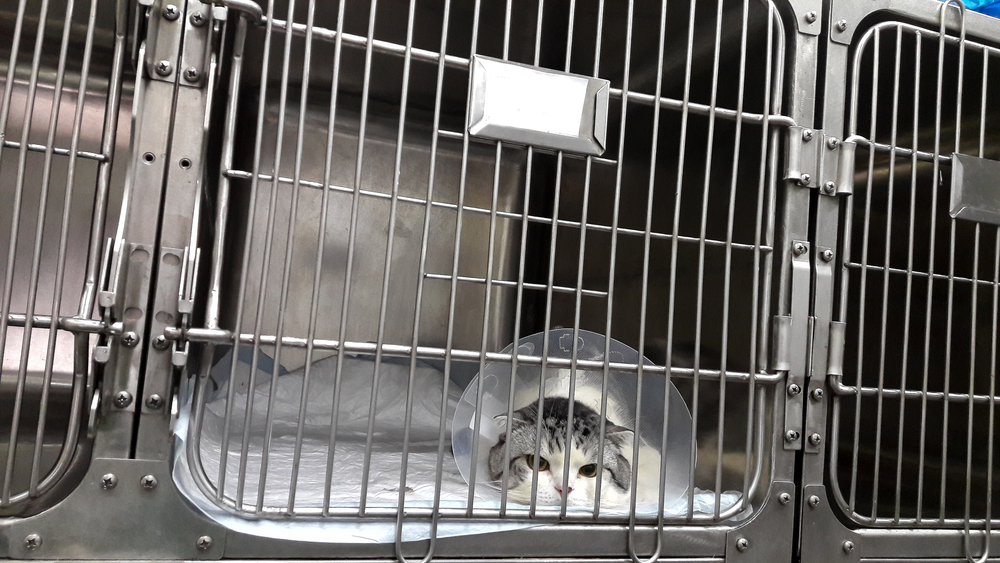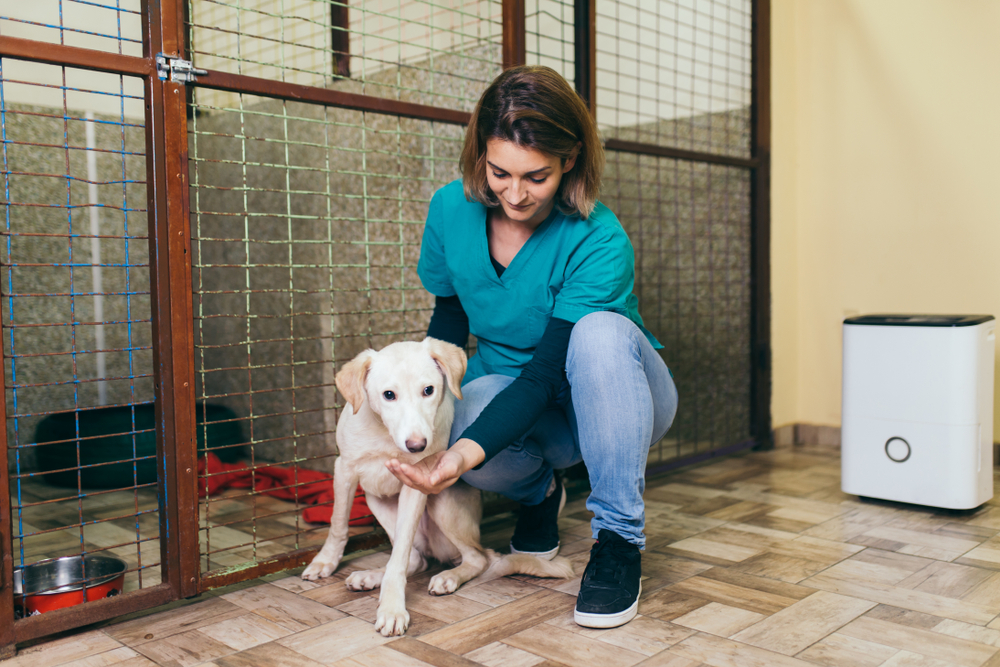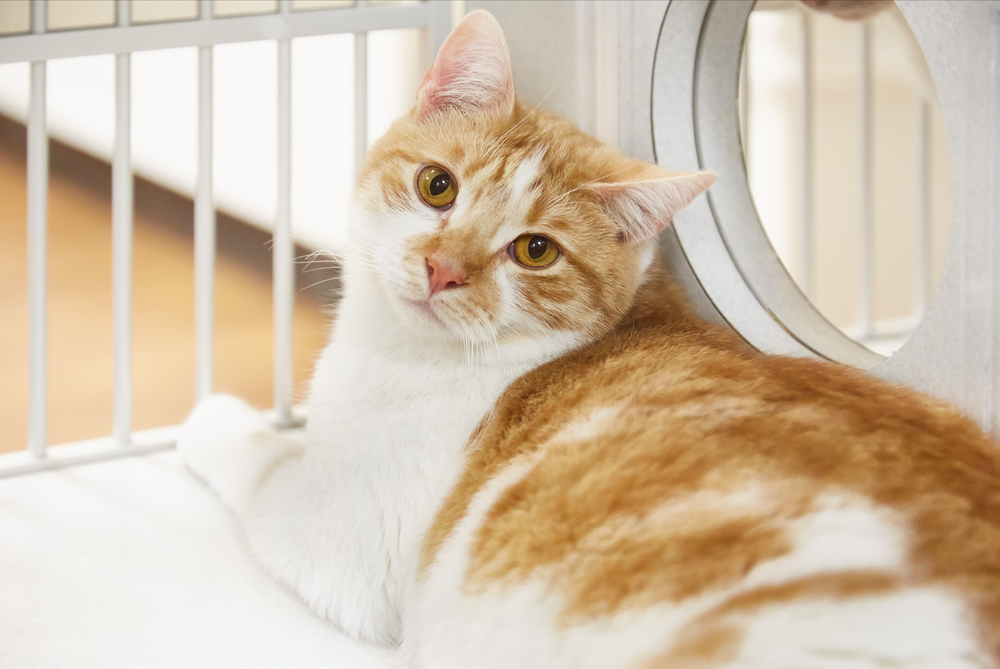
His official title is Community Outreach TNVR Coordinator, but most of the time, Paul Bates feels like a mediator, problem solver, and teacher. That suits him just fine.
Bates leads the team at Peggy Adams Rescue League in West Palm Beach, Florida. The organization works closely with shelter volunteers, cat rescue groups, and cat-caring neighbors to ensure free-roaming cats in Palm Beach County are properly vaccinated, sterilized, and fed.
It is estimated that more than 200,000 cats live on the streets in Palm Beach County. Once called feral cats, they are now identified as community cats.
“These are cats who live outside, who do not belong to anybody, and who are not adoptable because they are not socialized with people,” says Bates. “They certainly do not belong in animal shelters where they are often euthanized. Our job is to work with community cat advocates to make sure these community cats are neutered/spayed, vaccinated, and returned to their outdoor homes.”
On the Case
It’s a tall order, but Bates is up for the challenge. He is a Fear Free Pets Shelter Course graduate who works to educate people about the mindset of community cats and safe ways to trap, vaccinate, spay/neuter, and return these cats back to their colonies without stressing them or getting injured.
His shelter also helped get a county-wide law adopted that requires these cats to be sterilized, vaccinated, implanted with a microchip, have left ears clipped to identify these actions and then released to the same area where found.
Bates makes daytime and night-time visits to community cat sites in neighborhoods, car dealership parking lots, and alleys behind restaurants. He gives talks to volunteers and shares tips and resources on two key Facebook pages: Project CatSnip and Community Cats of the Palm Beaches. Project CatSnip is a program of the Peggy Adams Rescue League that provides free TNVR through grant funding and conducts free humane trapping classes.
Safety 101
Even though many of these cats appear friendly and may even allow a trusted person who feeds them to pet them, they are still capable of lashing out if they feel threatened.
“If you see a stray, friendly cat, do not attempt to pick up the cat and put him in a carrier because chances are that you will be bit or scratched,” he cautions. “Scooping up a cat in your arms can make them go into panic mode. The nails come out, and the teeth are ready to bite. It is far safer to set up humane traps to get them in so we can give them vaccinations and spay/neuter them and return them to their cat colony.”
To reduce fear or anxiety in the cat during transport, Bates recommends placing bed linens made of breathable fabric over the trap to help the cat settle down.
“A cat in an uncovered trap is apt to freak out and bounce off the sides of the cage,” he says. “Covered humane traps look like safe spots to a cat. Avoid using heavy blankets, thick towels or quilts because a cat inside could overheat due to the lack of air flow. And, he could also have to inhale the strong ammonia smell if he urinated or defecated during transport.”
To reduce fleas and ticks among these community cats, Bates recommends mixing food-grade diatomaceous earth powder with catnip and allowing the free-roaming cats to roll in it. This powder is safe for pets and people, but destroys exoskeletons in these parasites.
Tips for Success
Other insights shared by Bates:
- Community cats should not be relocated. Many risk injury or death from vehicles or predators in their determination to travel miles to return to their colonies.
- Attempts to completely remove a cat colony will only result in another cat colony moving in and producing kittens, a phenomenon known as the vacuum effect.
- The best way to lure intact community cats into humane traps is to place traps where cats gather to eat and allow a few days for the cats to get used to them. Then create a trail of food leading into the traps and placing the highest-quality smelly food (to these cats, that is usually sardines or tuna or even Kentucky Fried Chicken) in the middle of the traps.
- If you find a homeless cat whose left ear is notched, do not bring him to a shelter unless he is injured or ill. This is the universal sign that he is a community cat who has been neutered.
- Do not leave bowls of food out; they attract raccoons and other wildlife. Set up specific feeding times and remove bowls within an hour.
Numbers indicate that this multi-approach effort is working. Before the TNVR program began in 2009, Palm Beach County shelters took in 19,000 homeless cats with more than 14,000 cats euthanized in 2008. That number has been cut to fewer than 2,000 cats euthanized this year in county shelters.
“It really takes a village to help these cats,” says Bates. “We have a passionate group of board members, staff, volunteers, and people in neighborhoods all doing their part to help feed and keep these cats healthy.”
This article was reviewed/edited by board-certified veterinary behaviorist Dr. Kenneth Martin and/or veterinary technician specialist in behavior Debbie Martin, LVT.
Arden Moore is The Pet Health and Safety Coach. She is a best-selling author, radio show host, in-demand speaker and master certified pet first aid/CPR instructor who travels the country teaching with Pet Safety Dog Kona and Pet Safety Cat Casey. Learn more at www.ardenmoore.com and www.facebook.com/ardenmoore.


 As for black cats, Campbell says giving clever names to adoption campaigns works. The shelter has been successful with its “Desperate House Cats Looking for Homes” (a play on the popular television shows named Desperate Housewives) and “Pick Your Price” (a play on long-running game show The Price Is Right). Adopters often receive a free bag of cat food and qualify for a free veterinary visit. Black kittens and cats up for adoption often sport pastel-colored collars to help them stand out.
As for black cats, Campbell says giving clever names to adoption campaigns works. The shelter has been successful with its “Desperate House Cats Looking for Homes” (a play on the popular television shows named Desperate Housewives) and “Pick Your Price” (a play on long-running game show The Price Is Right). Adopters often receive a free bag of cat food and qualify for a free veterinary visit. Black kittens and cats up for adoption often sport pastel-colored collars to help them stand out.



